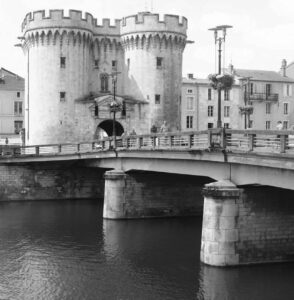Editor’s Note: At the request of his readers and in memory of Warner M. Montgomery, Ph.D, we will continue to publish his Adventure Travel stories for the time being.
The U.S. Army occupied a base on the outskirts of Verdun between 1950 and 1968. Linda’s father, Herbert Sosbee, served in the military police at the base from 1961 to 1964. His family joined him for his last two years.
In 1963, Linda met Pete Best, the original drummer of the Beatles. Pete had been replaced by Ringo Starr in 1962 and briefly played with the London Twisters who appeared at the Verdun Youth Club.
Linda and her friends from the Verdun American High School went to the concert and heard set after set of Beatle tunes. Her comment then was, “I like this music and Pete is a great drummer, but who are the Beatles?” If truth be known, she probably screamed her 13–year–old lungs out. Even today she swoons at the mention of Pete Best.
Verdun is the heroic city where 300,000 died in 300 days in 1916 during the Great War. Verdun is also the Historic
City where for 30 centuries it was a crossroads for European armies. Verdun became French in 1552 and suffered during the Franco– Prussian War, the First World War, and the Second World War, each time shouting “Never Again!”
The architectural sites remaining in Verdun help tell its story. The Saint– Amant Lock–Bridge was the center of fortifications on a hill overlooking the Meuse Valley. The Chaussée Gate guarded the entrance to the city. In the 1,000– year–old Notre–Dame Cathedral, people prayed to their Catholic god to save them from the next round of invaders.
We wandered along Victory Avenue and toured the 17th century town hall. Linda and Benedicte shopped. Then we climbed the 73 steps up to the Victory Monument. Inside the monument, a crypt houses lists of the names of soldiers who protected Verdun.
Looking down we could see the Quai de Londres, a terraced riverside marina financed by the City of London, England, in the 1920s. Picnickers and boaters were enjoying the August sun.
After a picnic lunch prepared by Benedicte, Olivier diapered little Thomas and we embarked for the Battlefield. We were not really prepared for “The Hell of Verdun,” but it was, like Auschwitz, a place we had to see.



Loading Comments